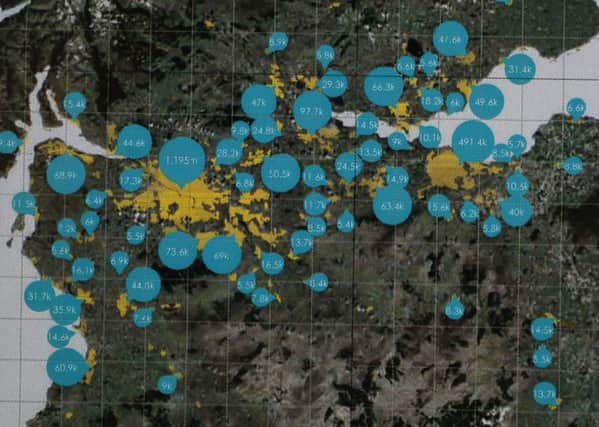Atlas revisits economic lie of Scotland


The new 35-map compendium showcases northern Scotland’s potential, including in wind and tidal energy, and its strategic position on developing Arctic trade routes.
An Atlas of Productivity, produced by Glasgow-based architecture and design consultancy Lateral North, shows that Scotland has 25 per cent of Europe’s offshore wind and tidal energy resources, and 10 per cent of its wave power.
Advertisement
Hide AdAdvertisement
Hide AdThe authors called for more economic development and population growth in the north.
However, they stressed the atlas was a non-partisan project, and had not been devised to support Scottish independence. Graham Hogg, one of its four collaborators, who started work while at Strathclyde University, said each had different political beliefs.
He said Scotland also had the potential to become a key staging post on international shipping routes between northern Europe and the Arctic.
The number of ships using the Northern Sea Route along the northern Russian coast between the Atlantic and Pacific has increased from four to 204 a year since 2010.
Experts predict one quarter of world cargo will travel through the Arctic by 2030.
Hogg said: “A key message of the atlas is to get people thinking differently about Scotland, whether it be considering a migration of people to the Highlands and Islands to exploit resources there, thinking about ourselves as an island nation again and how we can reclaim the coast that we have lost touch with, or taking advantage of these new and emerging resources in the Nordic and Arctic regions.
“We are a country that is too focused on urban economies. Our perception of how we inhabit the Scottish landscape should change – many of the industries and resources of our country’s future lie within the Highlands and Islands.”
Hogg said that following the Scandinavian example, “we don’t have to centralise our populations, but instead they should be spread out throughout Scotland and take advantage of the resources we have such as renewable energies”.
Advertisement
Hide AdAdvertisement
Hide AdRobin McAlpine, director of the Reid Foundation, which published the atlas, said: “If we want a prosperous future for Scotland, it is simply mad that we’re not properly looking at our land, air and sea resources and our geostrategic position.
“So much of our national energy and investment has gone into retail, banking and property speculation and so little into developing our transport links, bringing unproductive land into productive use or developing economies outside the Central Belt.
“If you look at this atlas in 2014, Scotland looks awfully like a wasted opportunity.”
Lesley Riddoch, broadcaster and director of the Nordic Horizons group, said: “The Atlas of Productivity debunks the myth of Scotland’s relative isolation.
“Scotland is the gateway to the burgeoning Nordic and Arctic regions, even if our centralised population and exclusion from land, sea and coastline lead Scots to think otherwise.
“Scotland has long been portrayed as Britain’s frozen north. These maps demonstrate it’s also the Nordic’s fertile south.”